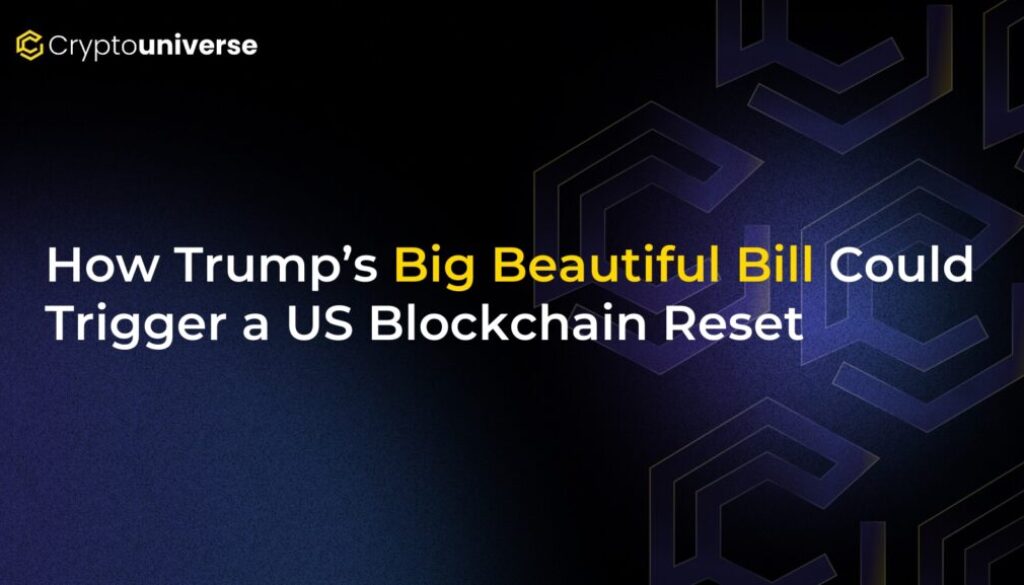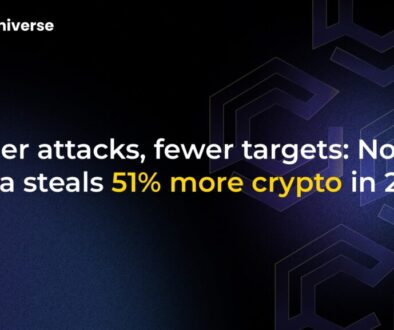How Trump’s Big Beautiful Bill Could Trigger a US Blockchain Reset

A New Financial Order on the Horizon?
Washington is buzzing, and it’s not just about politics as usual. A piece of legislation, dubbed the “One Big Beautiful Bill,” is making its way through the halls of power, and while on the surface it appears to be a standard economic package, a deeper look suggests it could be the catalyst for a fundamental reset of the entire financial system. Far from a simple fiscal adjustment, analysts and crypto insiders believe this bill is laying the groundwork for a new, blockchain-powered economy.
While mainstream headlines focus on tax cuts and spending, the crypto community is connecting the dots. They see a calculated strategy to deliberately weaken the old financial guard and usher in a new era of digital assets. Let’s break down what’s in the bill and explore the explosive theory that Trump’s could spark a blockchain reset.
What’s Inside the “Big Beautiful Bill”?
At its core, the legislation introduces a series of radical economic changes. Understanding these is key to grasping the larger theory at play. The bill includes:
- Sweeping Tax Cuts: Permanent reductions in taxes, primarily aimed at corporations and the highest earners.
- Deep Welfare Reductions: Significant cuts to long-standing social programs, including Medicaid and food stamps.
- Increased Federal Spending: A boost in funding for areas like border security.
- A Massive Debt Ceiling Increase: Perhaps the most critical component, the bill reportedly increases the national debt by a staggering $5 trillion.
This massive injection of debt has drawn sharp criticism from prominent figures like Elon Musk and Senator Rand Paul, who warn that it could push the U.S. toward bankruptcy. However, a growing number of observers believe this isn’t a bug; it’s a feature. They argue the move is designed to push the central banking model to its breaking point, creating a crisis that only a new, more efficient system can solve.
The “Controlled Demolition” Theory: Making Way for Crypto
The central thesis is that the bill is a Trojan horse for a full financial realignment. By intentionally flooding the system with debt, the legislation could accelerate the decline of the traditional banking infrastructure and the US dollar’s dominance, paving the way for a digital alternative.
This is where blockchain technology enters the picture. Proponents of this theory point to specific digital assets as the ready-made tools for this transition. The focus isn’t on Bitcoin, but on utility-focused projects designed for institutional and cross-border finance:
- XRP: With Ripple’s established partnerships and its focus on fast, low-cost cross-border payments, XRP is seen as a prime candidate to handle the volume of a new global financial system. The ongoing tokenization of assets, including U.S. Treasuries, on the XRP Ledger (XRPL) is cited as direct evidence of this preparation.
- Stellar (XLM): Much like Ripple, Stellar’s network is built for speed and efficiency in international payments, making it another key piece of the potential new infrastructure.
The goal, according to analysts, is to shift away from slow, expensive, and centralized systems like SWIFT and toward a decentralized, tokenized economy. The integration of these technologies with the new ISO 20022 global financial messaging standard is seen as the final piece of the puzzle, creating a compliant and unified network for digital value transfer.
Connecting the Legislative Dots
This bill doesn’t exist in a vacuum. Onlookers are pointing to other pieces of crypto-related legislation, like the rumored GENIUS and CLARITY Acts, as part of a coordinated strategy. The theory suggests a powerful synergy:
- The “Big Beautiful Bill” creates trillions in new debt.
- Other legislation, like a potential GENIUS Act, could then compel stablecoin issuers to hold that debt in the form of tokenized U.S. Treasuries.
In this scenario, the government creates a problem (massive debt) and simultaneously provides a blockchain-based solution to absorb it. This would effectively integrate the crypto-financial system into the heart of the U.S. economy, creating a new, digitally-native monetary framework.
What Does This Mean for Your Portfolio?
The implications of this theory, if it proves true, are monumental. A government-backed shift toward a tokenized economy could trigger an unprecedented flow of capital into the crypto space. The narrative shifts from crypto as a speculative asset to crypto as essential infrastructure.
For investors, this presents a high-stakes, high-reward scenario. If the architects of this plan succeed, assets like XRP and XLM, which are built for this exact purpose, could see explosive growth. The narrative of “the money printers will pump crypto” becomes far more direct, with new debt flowing directly into blockchain-based financial instruments.
However, it’s crucial to remain grounded. This remains a speculative theory, and the bill’s critics could be right. A $5 trillion debt increase could simply lead to hyperinflation and economic instability. But whether it’s a master plan or a series of convenient coincidences, one thing is clear: the line between government finance and blockchain technology is blurring faster than ever. The future of money may not be printed; it may be coded.


